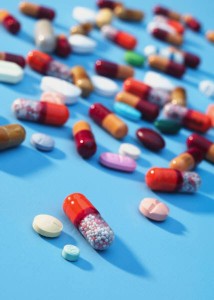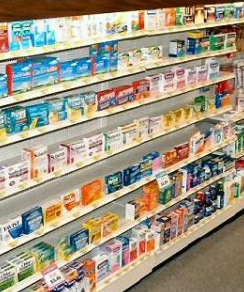For years the government has taken measures to protect consumers from the potential hazards of medicine use. Although it may sometimes appear that pharmaceutical companies are out to get the sick and helpless, or scheming to land you in the poorhouse, many of these companies actually work together to create a better economy. However, a new threat has appeared to take advantage of consumers’ shortcomings in medical knowledge and lack of experience in drug-purchasing- counterfeit medications.
Counterfeit drugs have  quietly crept onto the shelves of storefronts around the world. From faulty nasal decongestants and ineffective weight-loss pills, to fake cancer drugs, this market has no boundaries.
quietly crept onto the shelves of storefronts around the world. From faulty nasal decongestants and ineffective weight-loss pills, to fake cancer drugs, this market has no boundaries.
So how can you tell the difference between counterfeit medications and their reliable, FDA-approved counterparts? Unfortunately, these medications can be hard to identify, and even doctors claim that they have trouble telling which medications are authentic. Nonetheless, consumers can avoid becoming victims of these drug-criminals by taking a few precautionary steps.
The first line of defense for any medicine-user is to understand the importance of questioning the integrity of drugs. Most consumers don’t even realize that this issue is a common occurrence in their country, and assume that this situation happens only in other, less developed areas of the world. In the past 3 years, millions of dollars worth of counterfeit drugs have been purchased in the U.S. and Canada alone, proving that this crime can happen to anyone.
One sign that may be a giveaway for counterfeit drugs is incredibly cheap prices or strangely high discounts offered online. Many fake drug manufacturers offer deals like these because of their low budget production. If an offer sounds too good to be true then it often is, as these illegal, low-cost procedures can put consumers in serious danger. Counterfeit drug manufacturers are quick to cut corners, producing medicines in factories which may be dirty or contaminated and using significantly smaller amounts, if any, of active ingredients that are necessary for a drug to work effectively. For patients who suffer from serious diseases, these medicines can be life-threatening.
 Since it is so difficult for the ordinary consumer to distinguish fake drugs from real drugs, the U.S. Food and Drug Administration has been working alongside investigators to expose these criminals and keep you informed. The project has already lead to the discovery of several counterfeit-drug cases this year, including a fake version of Teva’s adderall, counterfeit Vicodin, and phony cancer medicine.
Since it is so difficult for the ordinary consumer to distinguish fake drugs from real drugs, the U.S. Food and Drug Administration has been working alongside investigators to expose these criminals and keep you informed. The project has already lead to the discovery of several counterfeit-drug cases this year, including a fake version of Teva’s adderall, counterfeit Vicodin, and phony cancer medicine.
The best way to avoid purchasing and using faulty medicines is to stay updated by watching for FDA warnings, news, and recalls. If you are taking drugs that dissolve, taste, or affect you differently than usual and you suspect that you may be taking counterfeit medicine, contact your doctor.
0."/>